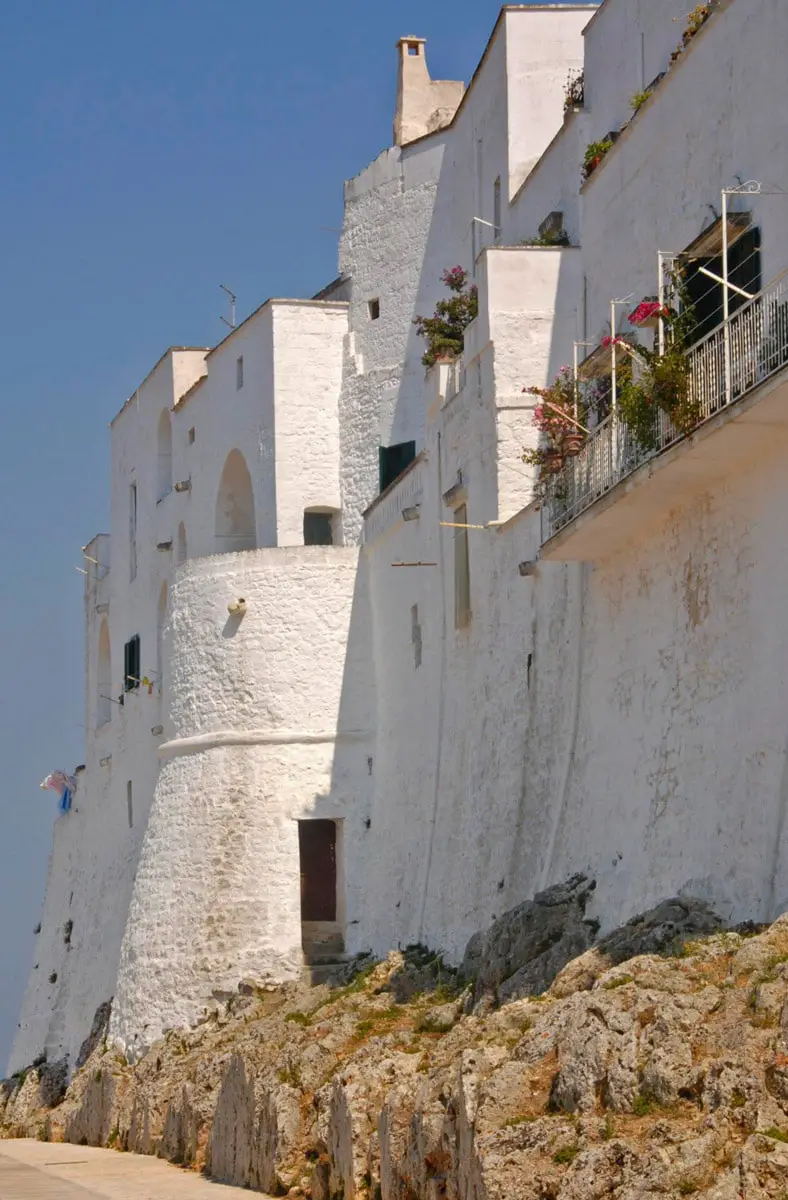World 🢖 Europe 🢖 Italy 🢖 Apulia
Cities and towns 🢔 Settlements 🢔 Architectural wonders 🢔 Categories of wonders
Wonder
Ostuni – the White City
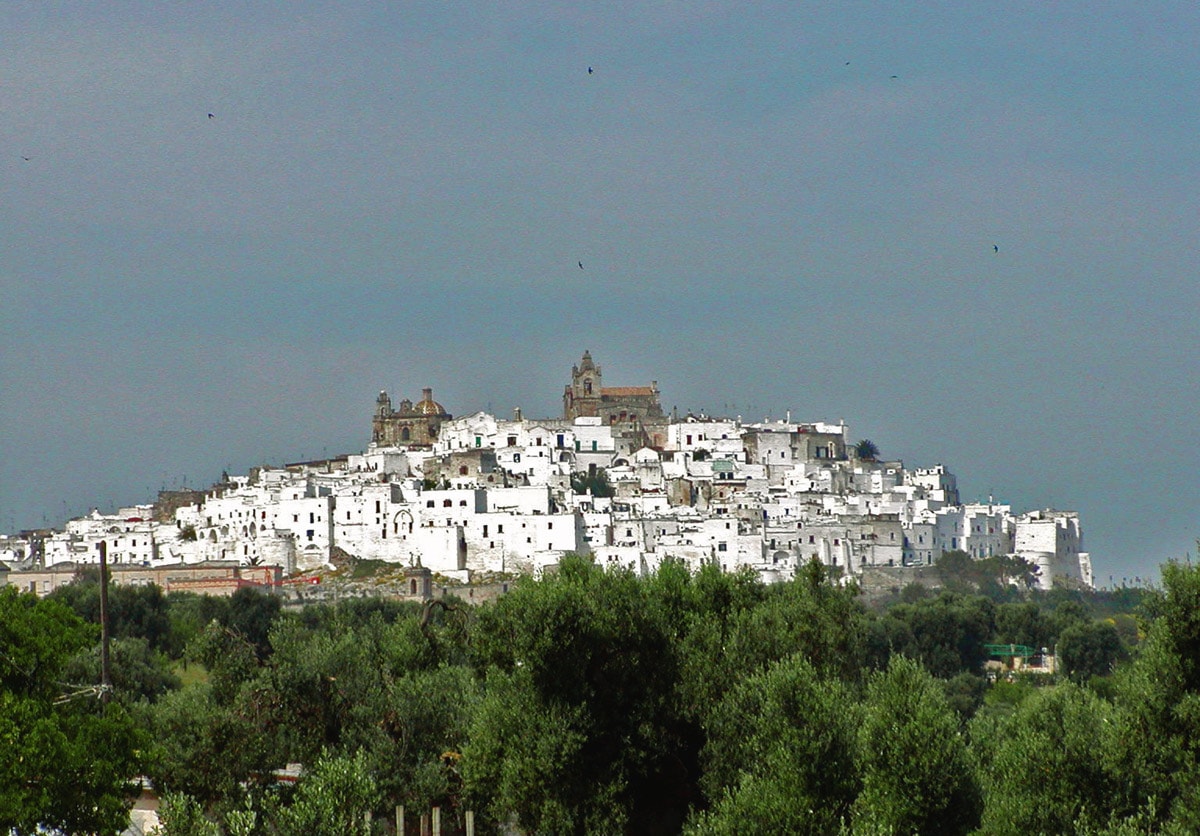
 In short
In short
When approaching from the Adriatic Sea, Ostuni looks like a mountain of white houses rising from the green olive plantations. This ancient town is more than 2500 years old.
 51.2%
51.2%
GPS coordinates
Founded
Periods of flourishing
Area of historic core
Map of the site
If you see this after your page is loaded completely, leafletJS files are missing.
 In detail
In detail
Geography
Ostuni is built on three hills of Cretaceous limestone, which rise up to 229 m above sea level. From the town opens a fine view towards the sea, which is 6 km from here.
Area around Brindisi has a dry climate and in this region are no rivers and lakes – rainwater seeps into the limestone, often forming caves and sinkholes. Nevertheless, the ancient agricultural landscape here looks idyllic – the undulating fields are covered with plantations of olives and vineyards.
Urban fabric
Ostuni is a spectacular hilltop city. In the medieval core – on the tip of the highest hill – the houses are built wall by wall, forming an enormous joint structure, covering the whole hill. To hold the structures, over the streets often are built arches – thus creating charming streetscapes.
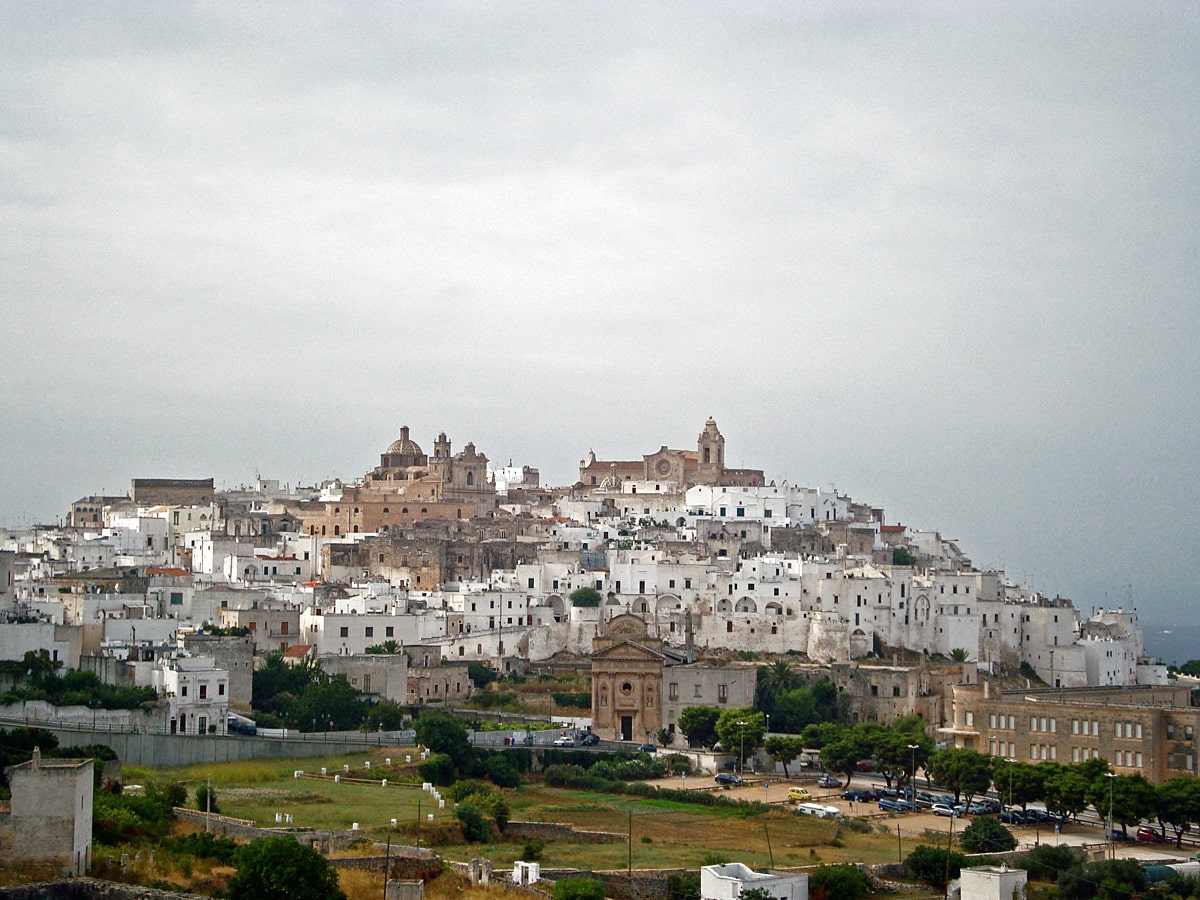
Spectacular feature is the white lime, covering the whole surfaces of the structures. This creates a dazzling sight in summer sun and due to this Ostuni is known also as Città Bianca – the White City.
This white color has been used here since the Middle Ages or even earlier and has several practical preferences. First – it helps to keep the premises in the buildings cool – white color is refracting most of the warmth. Second – the lime has been an effctive disinfectant in the times of epydemics. And third (and may be the main one) – lime is readily available in the surroundings of the city.
History
Prehistory and Messapi town
This area has been inhabited by Neanderthals already more than 40,000 years ago. Over the long millenia people have left rich archaeological heritage with many unique and exciting artefacts.
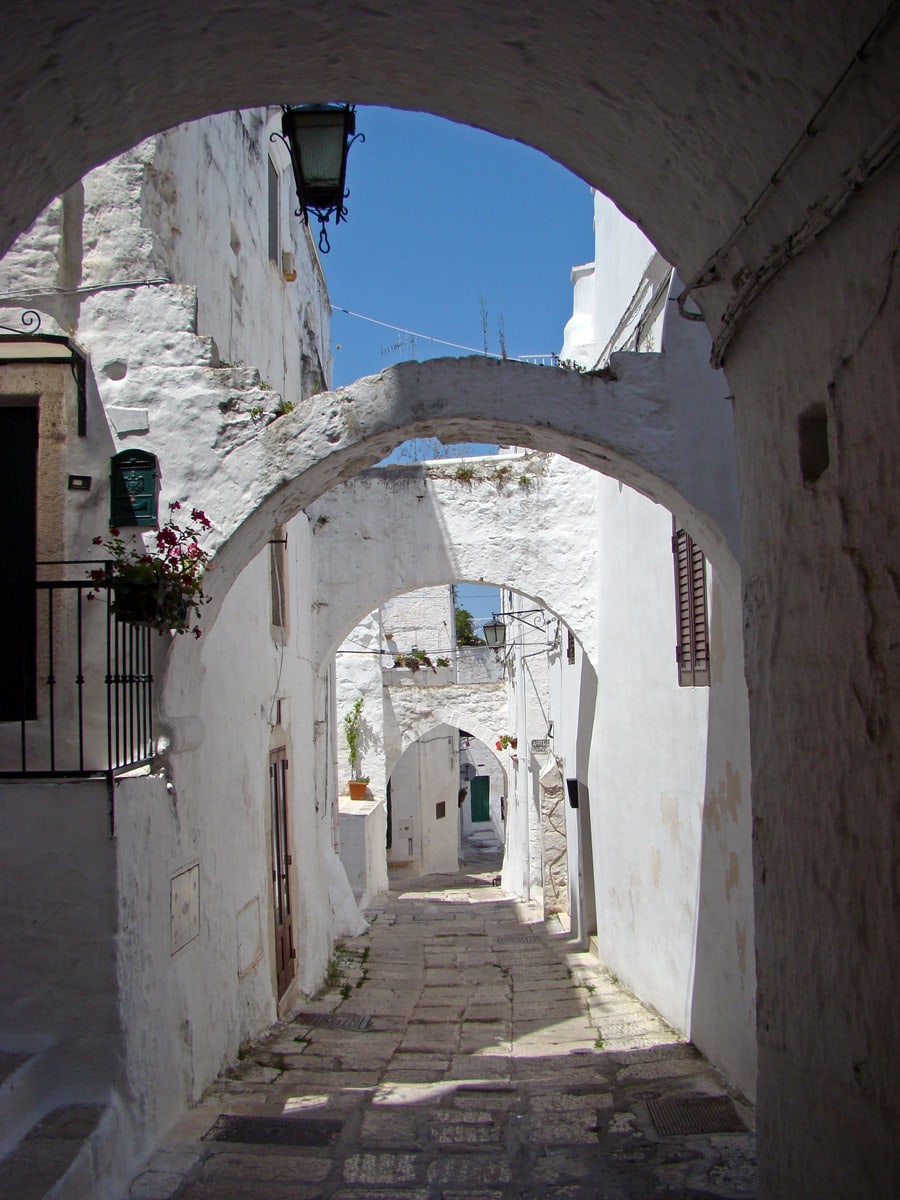
The town of Ostuni was established by Messapii culture. These people started to build first fortified towns in this region in the 8th century BC. Messapi people built their towns on the hilltops and encircled with fortification walls – sometimes there were systems of several walls. Such well fortified towns were a novelty of the time.
Ostuni (then – a Greek colony) together with Romans fought back against the troops of Hannibal, but after fierce battles the city was taken by Punic army.
Ostuni and the numerous other Greek colonies in the region were conquered by the Romans in 216 BC.
Middle Ages
Little is known about Ostuni (Hastunium) in Roman times. Later, in the late 5th century, when the Roman Empire collapsed, Ostuni, just like most other cities of the former empire, experienced a decline – but survived.
Apulia was conquered by Normans in the 11th – 12th centuries AD and in the 12th century they started faster development of Ostuni.
Count of Lecce Godfrey III built a castle on the top of the highest hill in Ostuni in the 12th century AD – and around it started to develop the medieval town of Ostuni. Up to this day remains a tower of the castle and the castle garden – Giardino Zurlo. In the 12th and early 13th century Ostuni grew and became a locally important, fortified town – there were built more fortification walls, developed the nearby port.
In this time developed the characteristic medieval hilltop town, with houses leaning against each other. Fortification walls encircled whole city. There were four gates. Today only two of them – Porta Nova (the 12th and 15th century) and Porta San Demetrio (the 13th and 15th century) – remain.
Renaissance and new times
In 1506, when the region was ruled by Isabella of Aragon and her daughter Bona Sforza, good times started in Ostuni again. The fortifications were further strengthened, city increased and here lived up to 17,000 people. Humanists and people of arts were invited to the city.
In the 17th century Ostuni declined, number of inhabitants fell sharply. Interesting fact is that during the plague in these times Ostuni was saved from the epidemy. It is believed that the white paint – lime – was an effective disinfectant – and in Ostuni it traditionally was used in large amounts.
In the 18th century the city increased again, there were built new quartales to the west from the historical centre.
In 1860 Ostuni became a part of Italy.
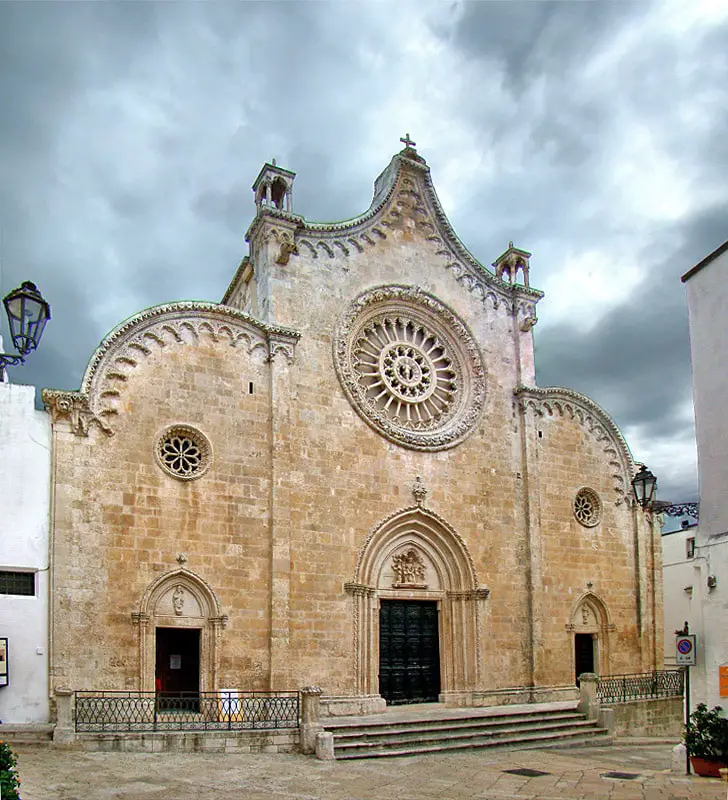
Today this unique white city is a popular tourist destination – in summer here live up to three times more people than in winter.
Attractions
The small medieval centre of Ostuni holds several exciting monuments of the architecture and history.
The most memorable to visitor is the gorgeous Ostuni Cathedral. This church was built in 1435 – around 1470 – 1495 in late Gothic style. The building has an elegant facade, adorned with ornate stone decorations. The lavish interior has been made later, in Baroque style.
Very ornate is also the Baroque style San Vito Martire church (1750 – 1752) – it has ornate, curved facade and luxuriant interior.
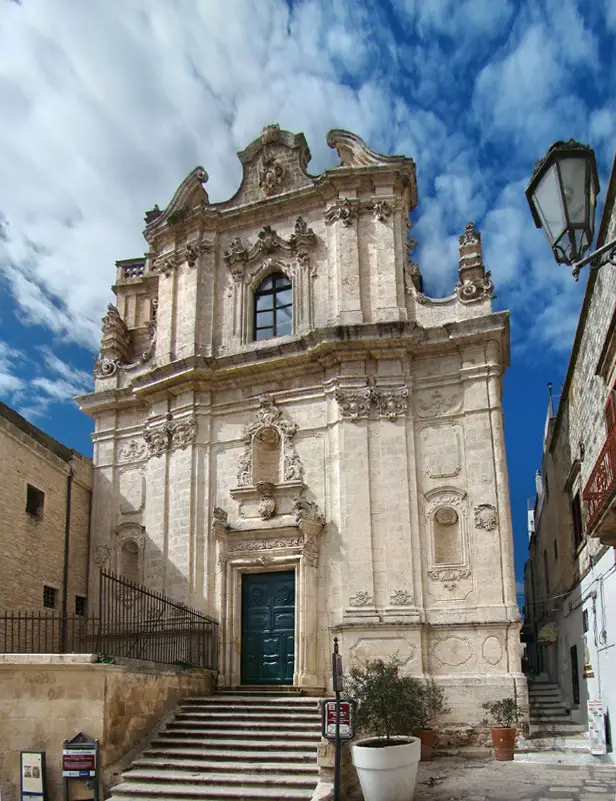
The city walls (here called – Aragonese walls) with round watchtowers are well preserved. Below the fortifications is the necropolis of Messapian people.
In the old city are also several palaces – such as Palazzo Vescovile (Bishop’s Palace, built shortly after 1559), Zevallos ducal palace in Baroque style (Zevallos were much hated rulers of the city in the 18th century), palazzo Siccoda (1575) and many others.
In the old city – in the former Carmelite monastery of Santa Maria Maddalena dei Pazzi is located the Museum of Pre-Classic Civilizations of Southern Murgia. Here is collected the information about the rich archaeological finds in this region.
 Linked articles
Linked articles
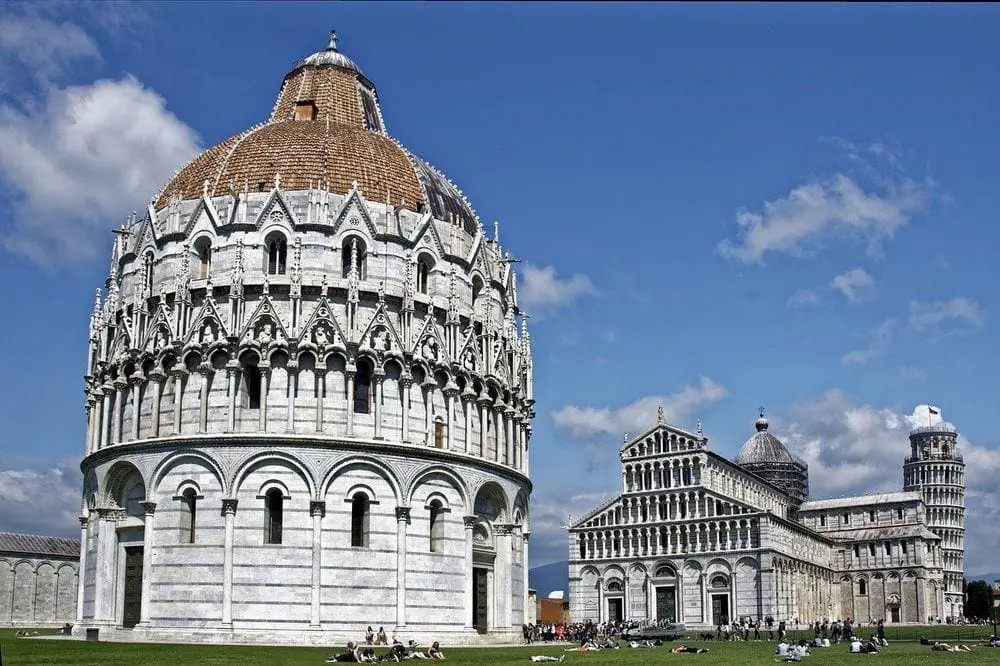
Wonders of Italy
Italy is one of the most popular destinations in the world due to its unsurpassed cultural heritage – this country has got some of the finest monuments of architecture and art in the world.
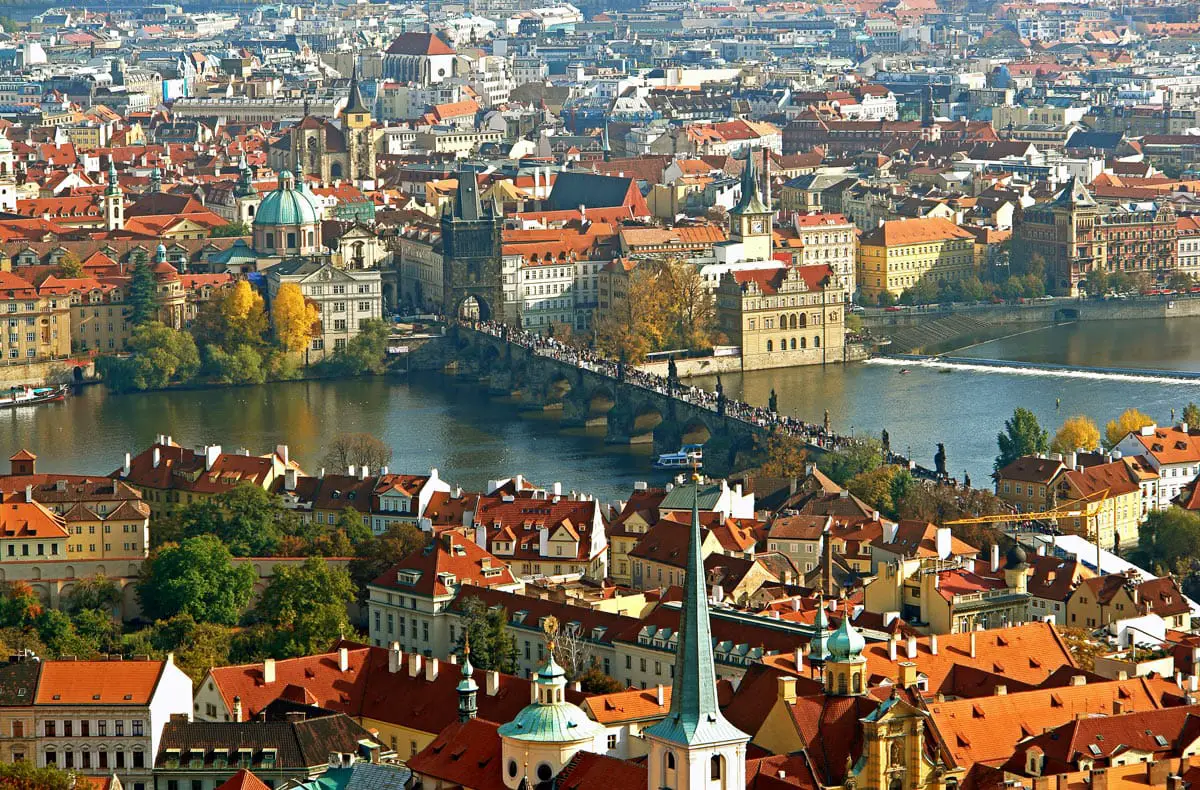
Cities and towns
Many of the most popular and exciting landmarks in the world are cities and towns. Millions of tourists are attracted to such cities as Venice, Florence, Prague, and Jerusalem. They never fail to impress and one will always find something new and unexpected here.
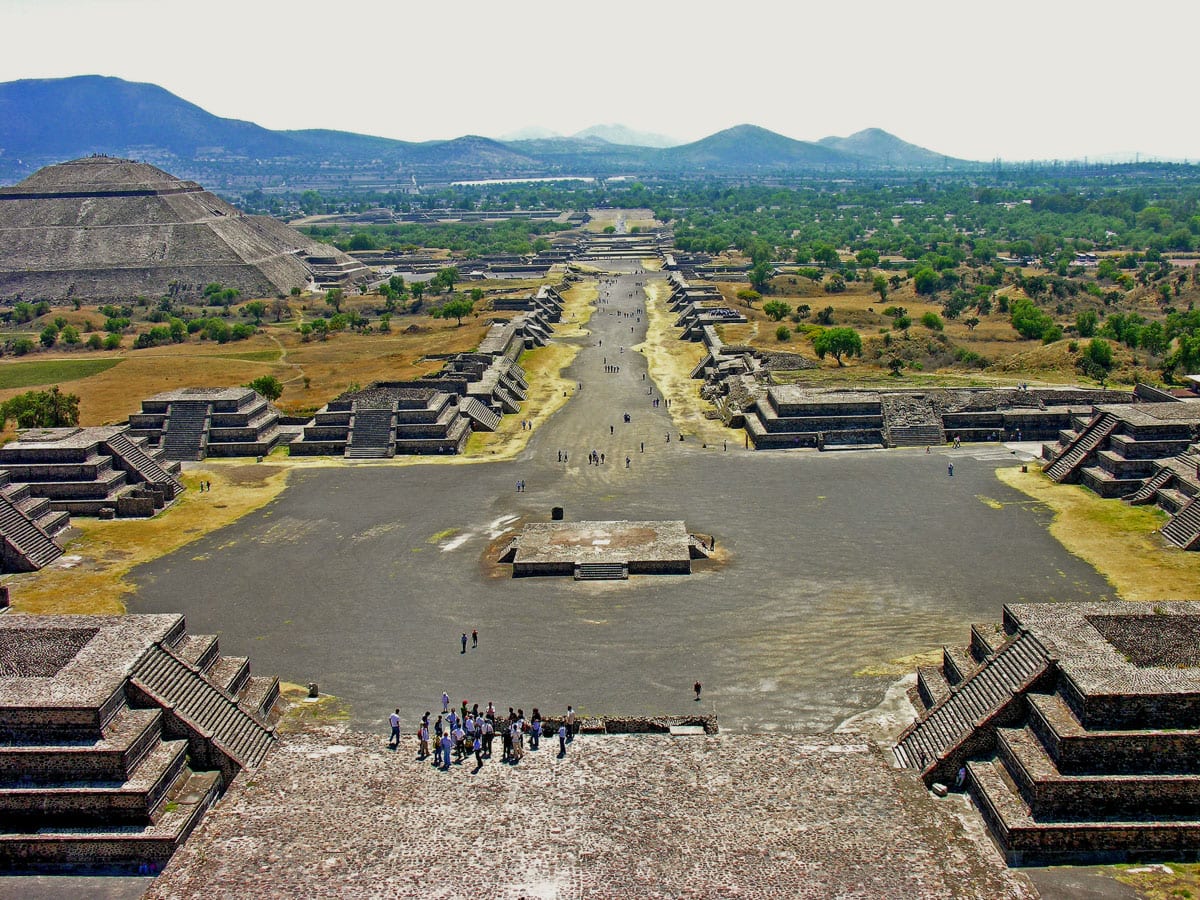
Ancient cities and towns
It turns out that urban planning is a very old profession. The urban fabric of ancient settlements – their structure and evolution gives a lot of food for thoughts about the nature of humans and civilization.
Wondermondo includes in the category of ancient cities and towns those settlements which have developed as urban areas at least 1500 years ago: around 500 AD.
 Recommended books
Recommended books
Places in Puglia: Ostuni the White City
This guide was written not just for the tourist but for everyone who loves the city of Ostuni and its surroundings. We have tried to include everything you need to know about Ostuni evaluating all the key attractions.
Old Puglia: A Cultural Companion to South-Eastern Italy
Apulia (or Puglia) is the heel of Italy, stretching down from the spur of the Italian boot. Its landscape is often very beautiful and it has wonderful old cities with Romanesque cathedrals, Gothic castles, and a great wealth of Baroque architecture, together with ‘rupestrian’ churches that contain Byzantine frescoes.

